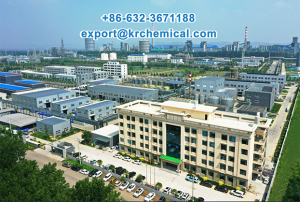PAAS (Polyacrylic Acid Sodium Salt) plays an important role in the textile printing and dyeing industry due to its unique chemical and physical properties. PAAS is a water-soluble anionic polymer that has applications in various stages of textile processing, especially in improving the quality and efficiency of printing and dyeing processes.
Here’s a breakdown of the role of PAAS in textile printing and dyeing:
1. Dispersing Agent
- Function: PAAS is widely used as a dispersing agent in textile printing and dyeing processes. It helps to disperse dye particles or pigments evenly in the dyeing bath or printing paste. This ensures that the dye is uniformly distributed on the fabric, preventing uneven color and improving the overall quality of the print or dye.
- Benefit: By dispersing the dye or pigment particles, PAAS prevents aggregation or clumping of dyes, which could otherwise lead to defects such as streaks, patches, or uneven dyeing.
2. Improving Color Fastness
- Function: PAAS contributes to improving the color fastness of textile materials, particularly wash fastness and light fastness. It enhances the bonding of dyes to the fabric, making the colors more stable and resistant to washing and light exposure.
- Benefit: PAAS helps reduce color fading or bleeding, which is especially important in fabrics that undergo frequent washing or are exposed to sunlight.
3. Anti-Backstaining Agent
- Function: PAAS acts as an anti-backstaining agent in dyeing operations. In certain textile dyeing processes (such as with reactive dyes), backstaining can occur, where dye that has been absorbed onto the fiber might re-deposit onto areas of the fabric that should remain undyed.
- Benefit: PAAS helps prevent backstaining by keeping the dye particles suspended in the bath, thereby reducing the likelihood of unwanted dye deposition during subsequent washing or rinsing stages.
4. pH Control
- Function: PAAS can help in controlling the pH levels in textile dyeing and printing processes. Its ability to form salts and act as a buffering agent can stabilize the pH, which is critical for certain dyeing processes where a specific pH is required for the dye to bond properly to the fibers.
- Benefit: By maintaining the correct pH level, PAAS ensures that the dyeing or printing process occurs under optimal conditions, leading to more consistent and high-quality results.
5. Thickening Agent for Printing
- Function: In textile printing, PAAS is used as a thickening agent for printing pastes. It helps to thicken the paste, making it suitable for printing onto fabric, particularly for screen printing and rotary printing techniques.
- Benefit: PAAS enables the print paste to adhere to the fabric without running or bleeding, producing sharp and well-defined patterns. It also allows the paste to stay in place on the fabric during the printing process, giving greater control over the printing design.
6. Auxiliary in Dyeing of Synthetic Fibers
- Function: PAAS is particularly useful when dyeing synthetic fibers such as polyester, nylon, and acrylic, where dye molecules may have difficulty penetrating the fibers due to their smooth and non-porous surfaces. PAAS can help improve the affinity of dyes for synthetic fibers, facilitating better dye uptake.
- Benefit: PAAS enhances the dyeing uniformity and improves the efficiency of dye fixation on synthetic fabrics, leading to better coverage, faster dyeing cycles, and improved color depth.
7. Stabilizing Agent for Dye Solution
- Function: PAAS is used to stabilize dye solutions in the dyeing process. Some dyes can precipitate or crystallize if not properly stabilized, leading to problems such as uneven application or wasted dye. PAAS helps to prevent precipitation, keeping the dye solution stable for longer periods.
- Benefit: This allows for better control over the dyeing process, reducing material waste and ensuring consistent, high-quality results in the final product.
8. Water Softener
- Function: PAAS can act as a water softener by binding to calcium and magnesium ions present in hard water. This is important in dyeing, as hard water can interfere with the dyeing process by precipitating dyes or causing uneven dyeing results.
- Benefit: By softening the water, PAAS ensures that the dyes work more efficiently, leading to more consistent and vibrant colors on textiles.
9. Improving Textile Hand Feel
- Function: PAAS can be used in post-treatment processes to improve the hand feel (texture or feel) of the fabric. In some cases, PAAS imparts a smoother, softer feel to fabrics without compromising the durability or integrity of the dye.
- Benefit: This is particularly valuable for improving the tactile properties of the fabric in the fashion, upholstery, and apparel industries.
10. Environmental Benefits
- Function: PAAS is considered relatively environmentally friendly compared to some other synthetic polymers. It is water-soluble and biodegradable, which reduces its environmental impact when used in textile processes.
- Benefit: The use of PAAS helps manufacturers meet environmental standards and regulations related to waste treatment and water management in the textile industry.
Summary of Key Benefits of PAAS in Textile Printing and Dyeing:
- Dispersing agent for uniform dye distribution.
- Improves color fastness, reducing fading and bleeding.
- Prevents backstaining, ensuring cleaner results.
- pH control for optimal dyeing conditions.
- Thickening agent for printing pastes, ensuring sharp designs.
- Helps in dyeing synthetic fibers, improving dye uptake.
- Stabilizes dye solutions, preventing dye crystallization.
- Softens water, improving dye efficiency.
- Enhances fabric hand feel, contributing to textile softness.
- Environmentally friendly, biodegradable and water-soluble.
In conclusion, PAAS is an important auxiliary chemical in textile printing and dyeing, contributing to improved quality, efficiency, and environmental sustainability. It helps optimize the entire process, from the preparation of dye solutions to the final printed or dyed product.

